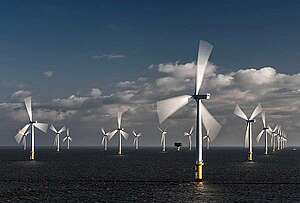Downloads
Electrifying Victoria: analysing the impact of election policies on prices and the climate
With the Victorian state election on a knife-edge, Greenpeace Australia Pacific has commissioned modelling on the impact the energy policies of the Victorian Labor party, Liberal/National Coalition, and Greens would have on electricity prices and carbon emissions to 2025.
In the absence of strong federal leadership on energy and climate policy, Australian states and territories continue to play a key role in shaping Australia’s energy transition.
Ahead of the pivotal Victorian state election, Greenpeace Australia Pacific commissioned modelling on the impact the energy policies of the Victorian Labor party, Liberal/National Coalition, and Greens would have on electricity prices and carbon emissions to 2025.
The analysis presents three independent scenarios based on each party’s announced policy platform, modelling the implications for regional fuel mix and renewable energy capacity, electricity emissions reductions, and wholesale electricity prices through to 2025.
These are the key findings:
On carbon emissions
- The three parties’ policies lead to substantially different outcomes for emissions to 2025
- Greens policies are most effective at fighting carbon pollution, with Victorian emissions from electricity projected to fall from 41 million tonnes per annum (Mtpa) in 2018 to 26 Mtpa in 2025: a drop of 37%
- Labor’s policies will see a small reduction in pollution levels from 2018 to 2025, from 41 Mtpa in 2018 to 39 Mtpa in 2025: a drop of 5%. This is because, despite Labor’s current policies leading to renewables growing to 48% of electricity capacity in Victoria by 2025, this will not in itself cause any of Victoria’s three brown coal plants to shut down before this date
- The Coalition’s policies will see Victoria’s carbon emissions rise by 2 Mtpa from 41 Mtpa in 2018 to 43 Mtpa in 2025, an increase of 5%
On prices
- Under all three policy scenarios, wholesale electricity prices fall from their 2018 peak of $98 per megawatt hour (MWh) towards $70 per MWh in 2021. This is largely driven by the Victorian Renewable Energy Target (VRET), the National Large-scale Renewable Energy Target (LRET), and rapid falls in the cost of wind and solar
- Labor’s policies are most effective at keeping power prices low, at $68 per MWh in 2025, a 31% reduction from 2018’s high of $98 per MWh
- Greens policies will lead to a more modest reduction of 14%, to $84 per MWh in 2025.
- The Coalition’s policies will see power prices rise from a projected low of $67 per MWh in 2021, to a high of $87 per MWh in 2025: a rise of 32%, but still around 11% lower than 2018


